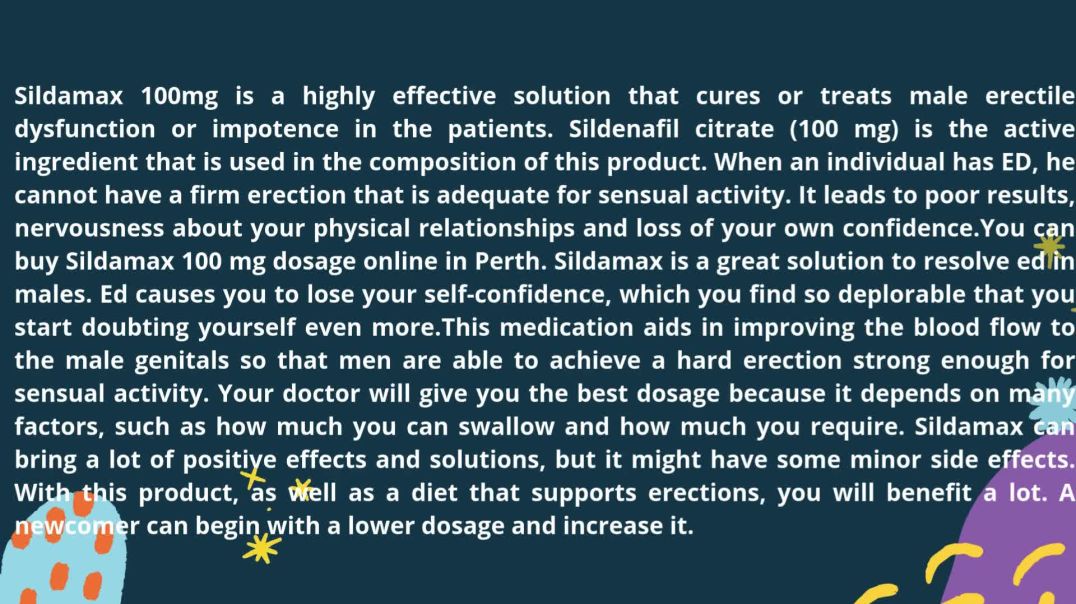Top videos
Know About Cardiothoracic Surgery in 60 Seconds About what cardiothoracic surgery is, why it is done and what is the result of such surgery. A Major Session on #cardiothoracic #surgery at #Congress #2018HCC 2018 Healthcare and Cardiology Conference #BANGKOK http://cosmicseries.org/cardiology-conferences/
Body Restorations will do an “Early Assessment” when you come in for physiotherapy; this allows therapists to identify the more complicated cases quickly and get started with treatment right away. If you are feeling pain now, it is best that you seek treatment as soon as possible. Research has proven that people who seek treatment for their pain immediately have less of a chance of it becoming an issue later own. Early intervention is always the best option. Visit - https://stalbertphysiotherapy.com/contact/
What Is a Hair Transplant? It's a type of surgery that moves hair you already have to fill an area with thin or no hair. Doctors have been doing these transplants in the U.S. since the 1950s, but techniques have changed a lot in recent years. You usually have the procedure in the doctor's office. First, the surgeon cleans your scalp and injects medicine to numb the back of your head. Your doctor will choose one of two methods for the transplant: follicular unit strip surgery (FUSS) or follicular unit extraction (FUE). With FUSS, the surgeon removes a 6- to 10-inch strip of skin from the back of your head. He sets it aside and sews the scalp closed. This area is immediately hidden by the hair around it. Next, the surgeon’s team divides the strip of removed scalp into 500 to 2,000 tiny grafts, each with an individual hair or just a few hairs. The number and type of graft you get depends on your hair type, quality, color, and the size of the area where you’re getting the transplant. If you’re getting the FUE procedure, the surgeon’s team will shave the back of your scalp. Then, the doctor will remove hair follicles one by one from there. The area heals with small dots, which your existing hair will cover. After that point, both procedures are the same. After he prepares the grafts, the surgeon cleans and numbs the area where the hair will go, creates holes or slits with a scalpel or needle, and delicately places each graft in one of the holes. He’ll probably get help from other team members to plant the grafts, too. Depending on the size of the transplant you’re getting, the process will take about 4 to 8 hours. You might need another procedure later on if you continue to lose hair or decide you want thicker hair. Expectations and Recovery After the surgery, your scalp may be very tender. You may need to take pain medications for several days. Your surgeon will have you wear bandages over your scalp for at least a day or two. He may also prescribe an antibiotic or an anti-inflammatory drug for you to take for several days. Most people are able to return to work 2 to 5 days after the operation. Within 2 to 3 weeks after surgery, the transplanted hair will fall out, but you should start to notice new growth within a few months. Most people will see 60% of new hair growth after 6 to 9 months. Some surgeons prescribe the hair-growing drug minoxidil (Rogaine) to improve hair growth after transplantation, but it’s not clear how well it works. Risks and Costs of Treatment The price of a hair transplant will depend largely on the amount of hair you’re moving, but it generally ranges from $4,000 to $15,000. Most insurance plans don’t cover it.
Uterine polyps, also called endometrial polyps, are usually small, bulb-shaped masses of endometrial tissue attached to the uterus by a stalk. They are soft, as opposed to uterine fibroids, which can grow much bigger and are made of hard muscle.
Watch Spinal Stenosis Videos Spinal stenosis occurs when the spinal cord in the neck (cervical spine) or the spinal nerve roots in the lower back (lumbar spine) are compressed. Symptoms of lumbar stenosis often include leg pain (sciatica) and leg tingling, weakness, or numbness. Arm pain is a typical symptom of cervical spinal stenosis. For cervical spinal stenosis with myelopathy, difficulty with coordination often occurs. Stenosis treatment may include non-surgical options (exercise, anti-inflammatory medication, epidural injections, and activity modification) or back surgery.
For a full Surgical Airway Techniques resource: https://bit.ly/2rb9Nud
Video courtesy of Gauri Mankekar, MBBS, MS, PhD
Laparoscopic surgery is minimally-invasive (keyhole) surgery and it is performed through very small incisions, using a camera to guide the surgeon during the procedure. Miss Sarah Mills, a top colorectal surgeon, explains why laparoscopic surgery is performed over alternative methods.
Make an appointment with Miss Sarah Mills here: https://www.topdoctors.co.uk/doctor/sarah-mills
A tummy tuck is a surgical process that removes excess fat and skin. Learn more about the procedure by watching this video!
Looking to book a consultation? Call Zuri Plastic Surgery now at 786-804-1603 or DM us today to schedule a complimentary consultation with Dr. Z.
Un tummy tuck es un procedimiento quirúrgico que elimina el exceso de grasa y piel. ¡Aprenda más sobre este procedimiento viendo este video!
¿Quiere agendar una consulta? Llame a Zuri Plastic Surgery ahora al 786-804-1603 o envíenos un DM hoy para programar una consulta gratuita con el Dr. Z.
In order to be able to look at tissues under a microscope, we need to first stain them with the right technique. Learn the main staining techniques used in histology today on our full video: https://khub.me/aux9w
Oh, are you struggling with learning anatomy? We created the ★ Ultimate Anatomy Study Guide ★ to help you kick some gluteus maximus in any topic. Completely free. Download yours today: https://khub.me/e0th1
As you probably know, histology is the study of the microscopic anatomy of cells and tissues. So we use staining methods to visualize and distinguish the different parts of cells and tissues since cells and their structures are usually transparent or colorless. The types of dyes used to color cells and their components can either be specific to particular structures, chemical groups or even molecules, and it can also be non-specific in which case most of the cell is stained in the same way.
When staining tissue samples, dyes that are used are either acidic or basic or a combination of the two. And why is that, you might be asking. Well, cellular structures such as nucleic acids or proteins have charged groups which are known as phosphate groups or carboxyl groups, just to name a couple. The dyes used in histology are colored organic compounds which also have a charge. Acidic dyes carry a negative charge and so they bind to positively-charged cell structures.
In the full version of this tutorial, we will cover some of the most common types of dyes used in histological staining of cells and their structures:
- basic dyes vs acidic dyes vs neutral dyes;
- hematoxylin and eosin;
- PAS - staining;
- Golgi method;
- Toluidine blue;
- Masson's trichrome;
- Osmium tetroxide;
To master this topic, click on the link and carry on watching the full video (available to Premium members): https://khub.me/aux9w !
Want to test your knowledge on the different types of cells and tissues? Take this quiz: https://khub.me/3g19f
Read more on how to interpret different histological sections on this complete article which goes through the different stains used in histology https://khub.me/saimh
For more engaging video tutorials, interactive quizzes, articles and an atlas of Human anatomy and histology, go to https://khub.me/pkvz2
Vilitra 20mg is a product miracle utilized in the treatment of erectile dysfunction among males. Erectile dysfunction describes a situation where one is unable to get or maintain an erection during sensual activity. Vilitra 20mg comprises vardenafil as the active ingredient. It belongs to the class of phosphodiesterase type 5 (PDE5) inhibitors. The mode of action is an augmentation of the blood supply to the male sensual organ, thereby assisting in accomplishing and maintaining an erection.The medication is taken orally, either with or without food, approximately 30 to 60 minutes prior to sensual activity. The effect of Vilitra 20mg can last for approximately 4 to 6 hours. This medication is not used for curing ED, but it cure the symptom. Vilitra 20 mg does not have any aphrodisiac effect and does not stimulate sensual desire. It cannot be taken by women and children. It should be used only after a doctor's consultation because this medication requires prior consultation, based on any prior medical history and current medicines. Common side effects associated with Vilitra 20 mg are headache, flushing, indigestion, and nasal congestion. Rare but serious side effects may be sudden loss of hearing or vision.Buy Vilitra 20mg online at our web store https://www.firstchoicemedss.com/vilitra-20mg.html
Tadagra 20mg is a new way of personalizing your routine. Since Tadagra 20 mg is designed to solve everyday issues men usually face, it is a reliable and efficient answer to improve your sensual performance and restore your passion. Tadalafil is a long-proven drug with a great history of its effectiveness and thorough scientific research supporting it.This becomes an asset to Tadagra 20 mg. This phenomenal chemical boosts blood supply to the male organ, leading to more powerful, longer-duration erections. Bid adieu to anxiety performance and hello to a new way to view fun and self-confidence.You can buy Tadagra 20 mg tablets online. One of the most phenomenal aspects of Tadagra 20 mg is how long its effects last. It may give you enhanced sensual strength for as long as 36 hours, allowing you to take charge of things as and when they come your way. Give up your agendas and go with the flow. Tadagra 20 mg offers excellent performance benefits along with its phenomenal ease of use. Simply swallow one pill and one glass of water and you are ready to embark on a thrilling and fulfilling journey.Tadagra 20mg is made according to the most stringent controls to keep it potent, secure, and pure. Buy Tadagra 20mg online at our web store https://www.firstchoicemedss.com/tadagra-20mg.html
The product Ivermectin is contained in Iverheal 6 mg: a product that has come to be utilized in various parasitic diseases in humans.It is a product that has been established to be safe and one well tolerated by the body without inflicting harm. It's been in practice for so long to offer support when these diseases, including river blindness, strongyloidiasis, and scabies occur. Iverheal 6 mg functions by giving the nervous system of its parasites, paralyzing them, and ultimately killing.You can buy Iverheal 6 mg tablets online. This makes it a very effective treatment for a vast array of parasitic infections such as roundworm, hookworm, and mite infection.One more advantageous point of Iverheal 6 mg is that it is convenient to take and store as it is in tablet form. This product is also quite affordable, hence available to the larger population. Another advantage of the Iverheal 6mg is that this product has a very low side effect profile. So, while some patients might also have minimal symptoms such as headache or dizziness or nausea occasionally, but they are transitory and are barely severe but in case they continue or are annoying you consult a doctor. Generally speaking, Iverheal 6 mg is a safe as well as well-tolerated product.Buy Iverheal 6mg online at our web store https://www.firstchoicemedss.c....om/ivermectin-6mg.ht
A unique medicine, Sildamax 100mg, is used to cure or treat sensual impotency in men. It has 100 mg of sildenafil citrate. This is among the best medical treatments for this big issue named Ed. Ed makes you lose your confidence and affects your comfort while living, something which you detest so much that you start feeling even more uncomfortable about your body. You no longer need to worry about this disease due to this great remedy that is going to eliminate ed from your life. You must visit your doctor immediately after you get to know about this condition. You can buy Sildamax 100 mg dosage online UK. Your physician will only be able to prescribe this after verifying the needs. That is why Sildamax is a prescription product. This medication will, in turn, be very useful if it is complemented with a balanced diet to enhance erections. A layman can, on gradually increasing doses from an initial smaller dose.This is achievable since it does not impact fertility (according to cases since tested).Buy Sildamax 100mg online at our web store https://www.firstchoicemedss.c....om/sildamax-100mg.ht
Sildamax 100mg is a highly effective solution that cures or treats male erectile dysfunction or impotence in the patients. Sildenafil citrate (100 mg) is the active ingredient that is used in the composition of this product. When an individual has ED, he cannot have a firm erection that is adequate for sensual activity. It leads to poor results, nervousness about your physical relationships and loss of your own confidence.You can buy Sildamax 100 mg dosage online in Perth. Sildamax is a great solution to resolve ed in males. Ed causes you to lose your self-confidence, which you find so deplorable that you start doubting yourself even more.This medication aids in improving the blood flow to the male genitals so that men are able to achieve a hard erection strong enough for sensual activity. Your doctor will give you the best dosage because it depends on many factors, such as how much you can swallow and how much you require. Sildamax can bring a lot of positive effects and solutions, but it might have some minor side effects. With this product, as well as a diet that supports erections, you will benefit a lot. A newcomer can begin with a lower dosage and increase it.Buy Sildamax 100mg online at our web store https://www.firstchoicemedss.c....om/sildamax-100mg.ht
Super vidalista 80mg contains a combination of two strong drugs: tadalafil (20mg) and dapoxetine.These two work together to successfully treat erectile dysfunction and premature ejaculation in men.What an amazing medicine, isn't it? You can treat both your issues with one product.Tadalafil treats erectile dysfunction, while dapoxetine treats premature ejaculation.This product is specifically designed for men, not women and children.This product is very effective, popular, and commonly found in the market too You can buy Super Vidalista 80 mg online. If you are having these two concerns, then you can use this medicine but only after consulting with a doctor.Super vidalista contains a higher dose, so begin with a low one as recommended.You need to go through the pre-requisites prior to using this medicine to evade any grave side effects or complications. As aforementioned, this medicine has some advantages but also some modest side effects, so in case you are having any severe ones, visit your doctor immediately and discontinue the use of it.Centurion Laboratories Pvt Ltd produces and markets this medication.Buy Super Vidalista 80mg online at our web store https://www.firstchoicemedss.c....om/super-vidalista-8
Super vidalista 80mg contains a combination of two strong drugs: tadalafil (20mg) and dapoxetine.These two work together to successfully treat erectile dysfunction and premature ejaculation in men.What an amazing medicine, isn't it? You can treat both your issues with one product.Tadalafil treats erectile dysfunction, while dapoxetine treats premature ejaculation.This product is specifically designed for men, not women and children.This product is very effective, popular, and commonly found in the market too You can buy Super Vidalista 80 mg online. If you are having these two concerns, then you can use this medicine but only after consulting with a doctor.Super vidalista contains a higher dose, so begin with a low one as recommended.You need to go through the pre-requisites prior to using this medicine to evade any grave side effects or complications. As aforementioned, this medicine has some advantages but also some modest side effects, so in case you are having any severe ones, visit your doctor immediately and discontinue the use of it.Centurion Laboratories Pvt Ltd produces and markets this medication.Buy Super Vidalista 80mg online at our web store https://www.firstchoicemedss.c....om/super-vidalista-8




















